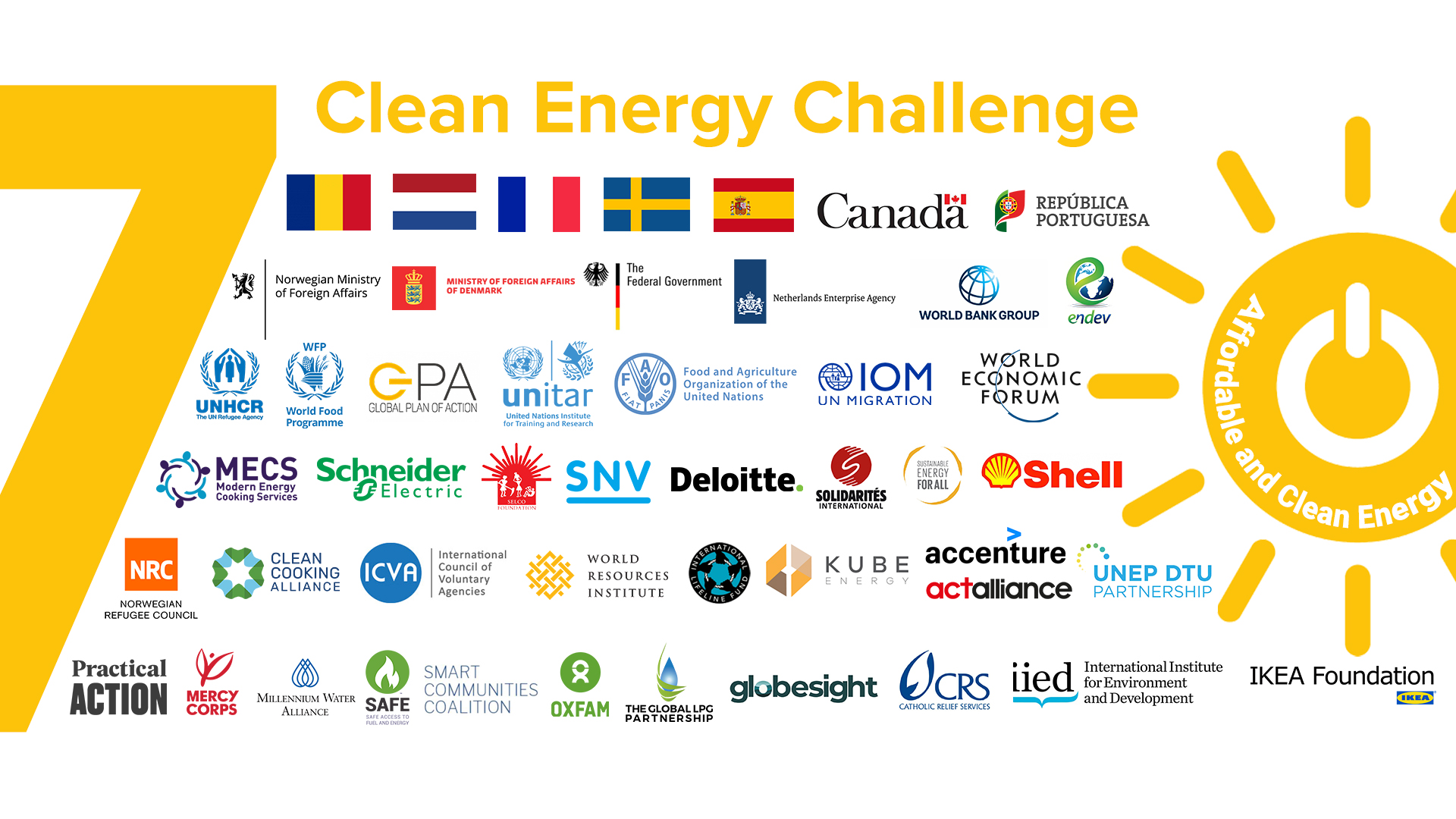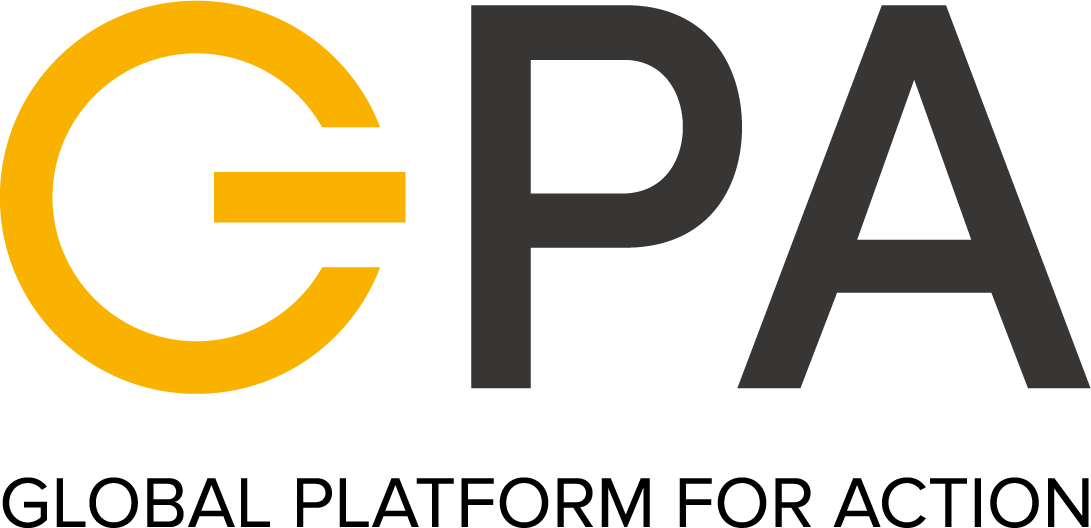In this section
In this sectionThe UNHCR Clean Energy Challenge: setting up the global structures and processes for implementation
How should humanitarian agencies engage with external partners and the private sector to help deliver a high-energy, low-carbon future for refugees? How will we produce a pipeline of clean energy access projects for investment? Has this changed with the UN Global Humanitarian Response Plan for Covid-19?
Since launching the Clean Energy Challenge (CEC) in December 2019, UNHCR has worked with the secretariat of the GPA to set up a multi-stakeholder Action Group. This includes an emerging 'marketplace' for UNHCR and other humanitarian agencies and partners to present specific clean energy project opportunities, through regular multi-stakeholder meetings. The marketplace brings together the variety of support the CEC community can offer, whether it is financial, technical equipment, training, logistics or advocacy. Over time, the marketplace aims to set-up a project pipeline that can attract investment. This is a crucial leg in the journey from assessment to investment, and replaces a more ad hoc set up that has largely failed to deliver change on the ground, despite a long history of global humanitarian energy strategies and targets.
UNHCR is committed to delivering a high-energy, low-carbon future for refugees and for the first time to include explicitly nearby hosting communities in energy project development. But how do we produce a pipeline of clean energy access projects for investment, and what's the role of external partners and private sector in doing this?
We first need to identify priority needs and opportunities for access to clean energy technologies, on the ground. This will mean analysing the existing energy landscape and gathering data to fill our knowledge gaps. In addition to existing technical staff, including deployments from partners such as NORCAP, we will need additional research and technical assistance provided by GPA partners to collect data and conduct market assessments. As part of the GPA we are working to ensure that all data on SDG7 speaks to a set of key indicators, to improved and update the Clean Energy Challenge baseline database. Given that such data will have to be collected bottom-up, by a range of partners, it is crucial that all actors agree on a set of core standardised indicators that cover all aspects of the Clean Energy Challenge, e.g. to unpack SDG7 in situations of displacement.
Based on the data collection and findings of each energy assessment, UNHCR, other UN agencies and partners will oversee the production of high quality project proposals to create access to clean energy technologies. The process for doing this is laid out in new sector-wide guidance defined by the GPA, led by UNHCR, that will be published in 2020. UNHCR’s role is that of an enabler and catalyst, seeking partnership with other stakeholders working on energy to deliver results. For UNHCR, the idea is that in-country energy or development officers lead the process, drawing on global guidance and technical support from HQ, the GPA and external partners where relevant.
New clean energy projects will be designed in consultation with refugees and relevant national planning authorities, integrating nearby host communities into proposals. Projects will be designed in close collaboration with local UNHCR technical units (WASH, shelter, health and environment) and Development and/or Livelihoods Officers and senior management to ensure alignment with existing or planned programming and projects. The creation - or reform - of similar internal processes will likely be necessary to push the SDG7 agenda through other lead UN agencies party to the GPA, e.g. IOM, WFP, FAO and UNDP.
In the short term, this work will be part of the UN Global Humanitarian Response Plan for Covid-19. UNHCR is lining up technical support to jump-start projects that provide sustainable electrification of critical infrastructure in situations of displacement. These projects will also feed a longer-term analysis on the clean energy transition. As such, they will be of core relevance in providing durable solutions in protracted situations, with strong private sector participation.
This is also connected to the agenda for decarbonising UNHCR's operations. Through the GPA, UNHCR has helped to develop standard contracts for Power Purchase Agreements and Lease Agreements and is supporting the development of a de-risking mechanism that will enable private sector investment in solar PV power systems, to supply operations in the field. This will mean UNHCR and other UN agencies and humanitarian partners can switch from treating energy as a product that it buys (diesel generators and fuel) to a service that it pays for, thus reaping significant financial savings and reduced carbon emissions.
In terms of focus countries, we are prioritising operations where there are plans to strengthen health infrastructure and/or where existing power supplies are insufficient, unstable or overly expensive. And where governments have already prioritized plans for investment in energy access for refugee-affected areas. We also see greater opportunities to work in countries that have a positive enabling framework, including one or more of the following: an IDA 18 funding window; signatory to the CRRF; right to work policies; cash-based interventions etc. In short, we are pursuing work that will lead to the development of new energy access projects that are:
- Aligned with the objectives of the Clean Energy Challenge
- Empirically informed, with underlying fact-based analysis
- Private-sector led or demonstrating clear economic sustainability
- Co-designed by end users, target beneficiaries and local authorities
In conclusion, we believe in the need and viability of cleaner and safer energy technologies for refugees, that this will bring positive systemic change to enable greater connectivity, access to education and finance, and ultimately jobs. Investment in SDG7 thus contributes to self-reliance of refugees and eases the burden on host communities, but also aligns with the UN’s climate action agenda.
Going forward, UNHCR needs to consolidate and strengthen these evolving structures and processes as a means to achieve the vision of the Clean Energy Challenge. This will require innovative thinking on institutional collaboration - both internally and externally - building on the work of the GPA and taking it to the next level of implementation and scale up.
This article is written by Jaime de Bourbon de Parme, Senior Advisor for Private Sector Partnerships at UNHCR and co-chair of the Clean Energy Challenge Action Group, and James Haselip, energy advisor for UNHCR and co-chair of the GPA working group on data and evidence.

Last updated: 22/07/2020
